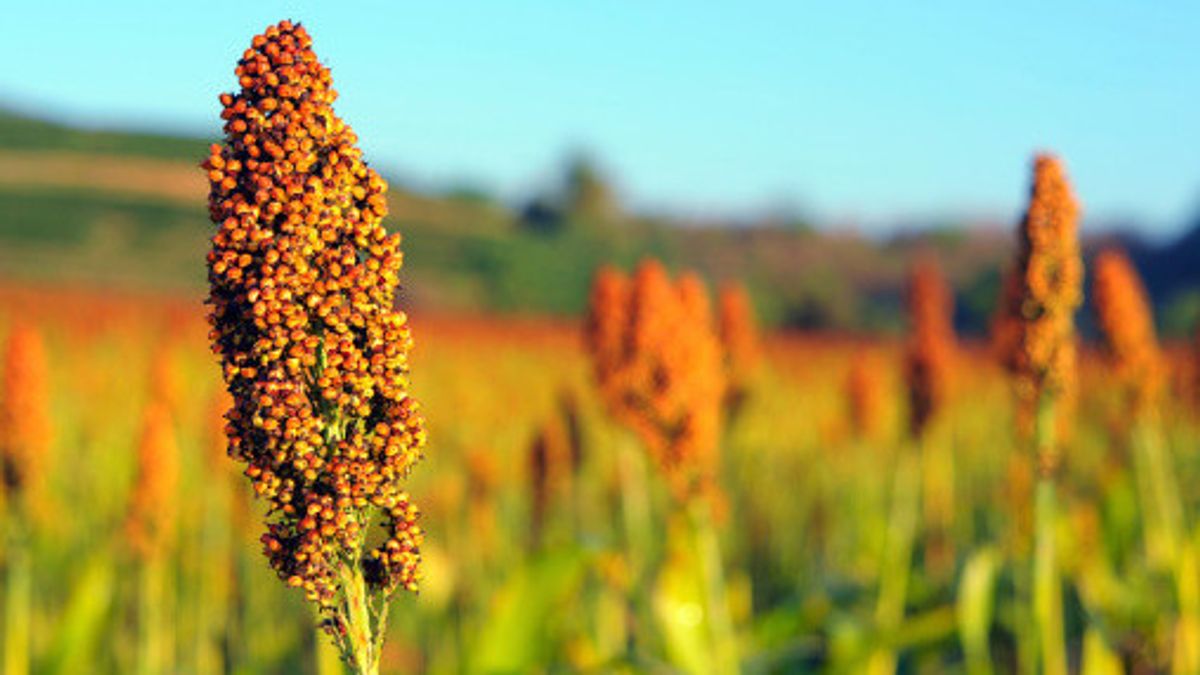YOGYAKARTA – Sorghum is one of the food ingredients other than rice which was introduced in a collection of recipes from remote parts of the archipelago at Mustika Rasa in 1967 which was initiated by the First President of the Republic of Indonesia, Ir Soekarno. In the modern food landscape, sorghum is also an alternative choice for non-gluten foods.
Citing a journal published on the Indonesian Agricultural Research and Development page, Monday, July 18, sorghum with the scientific name Sorghum bicolor (L) Moench is native to the tropics of Ethiopia, East Africa, and the Ethiopian highlands which are considered the main centers of domestication of sorghum. Its development probably began in the first century and in the 10th century reached Botswana. Cultivation spread in the Americas around the mid-19th century. In Indonesia, sorghum entered in 1925 through the Dutch East Indies Government. Launching Farm Progress, here is a list of the advantages of sorghum cultivation.
1. Drought tolerantA former extension agronomist at Kansas State University, said the drought in Kansas made researchers rethink the potential of sorghum. He said, when the rainfall is good, everyone grows corn because it has high economic value. So that the field that used to be planted with sorghum is getting smaller. But farmers are finally rethinking the value of drought tolerance.

When compared with the costs of planting and caring for sorghum with maize, it is agronomically advantageous. As a substitute for corn as animal feed, sorghum is also potential.
3. Less insects and pestsBesides having agronomic value, it can be used as animal feed, another advantage of sorghum cultivation. Sorghum is disliked by insects as much as corn. Even the attack of fungal pests and their by-products is minimal.
4. Yields rarely failAs a country crossed by the equator, Indonesia has two seasons, namely the rainy season and the dry season. Every season, certain areas do not get enough water for agriculture. Well, if you don't get enough water or vice versa, there is too much water overflow, agricultural crops have the potential to fail. For sorghum, producers or farmers do not have to worry about poor yields. Even the harvest is always sold in the market because it can be used as food ingredients other than rice, bread flour, and animal feed.
5. Sorghum flour is an antioxidant substitute for wheat flourSorghum is a versatile crop. First, flour from sorghum seeds is an antioxidant which is related to helping fight inflammation and the immune system. In addition, sorghum flour is a substitute for gluten-free wheat flour for making bread, cakes, or sourdough.
Agronomically, each acre of sorghum requires a cultivation cost of 100 US dollars cheaper than corn. That means, sorghum has the potential as a superior cultivated plant.
The English, Chinese, Japanese, Arabic, and French versions are automatically generated by the AI. So there may still be inaccuracies in translating, please always see Indonesian as our main language. (system supported by DigitalSiber.id)













